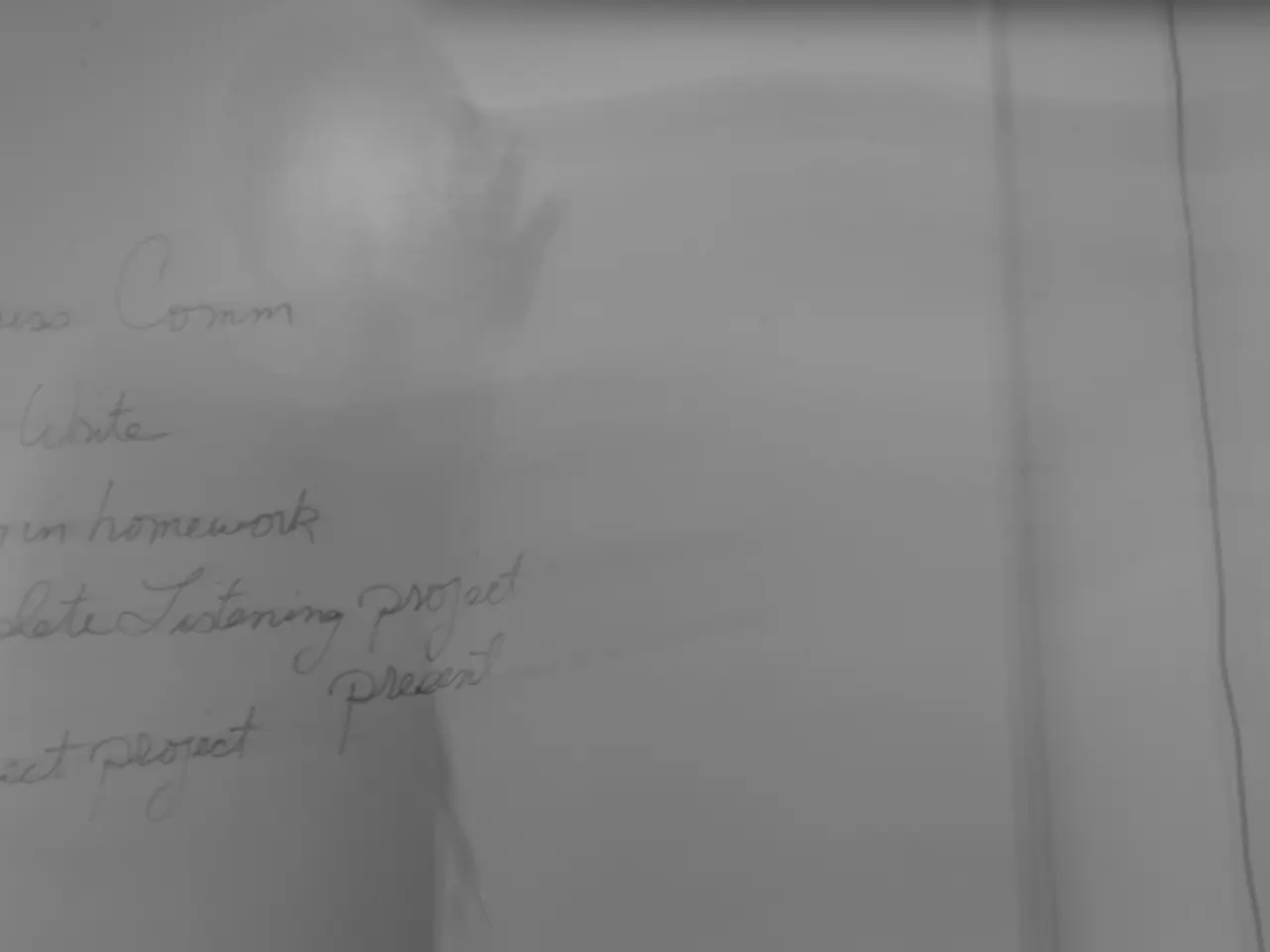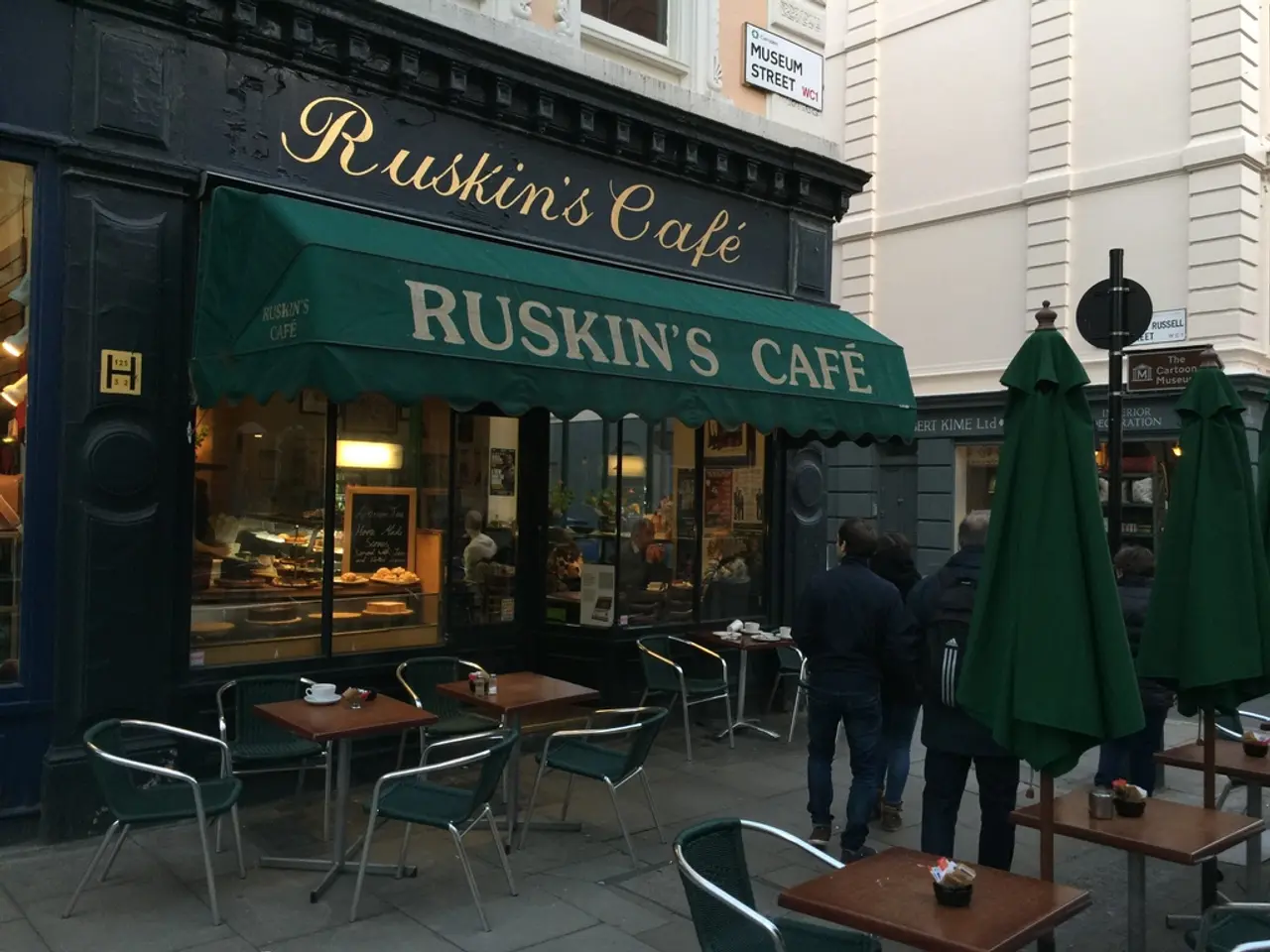Economic implications of Trump's fresh tariffs deliberated by industry professionals
President Donald Trump's new tariffs have sent shockwaves through the U.S. economy, with potential consequences that include a risk of stagflation, reduced job growth, and challenges for the Federal Reserve's monetary policy.
The average effective tariff rate has risen to 18.3%, the highest since 1934, according to reports. This increase is likely to have a significant impact on the economy, as importers typically pass along a share of the tariff burden to shoppers in the form of higher prices, analysts note.
In July, the U.S. added 73,000 jobs, significantly lower than the average of 130,000 jobs added each month this year. Over the previous two months (May and June), the U.S. added a combined 33,000 jobs, much lower than a previous estimate of 286,000 jobs. These figures suggest a potential cooldown of economic growth, which may coincide with an uptick of inflation.
The new tariffs could potentially lead to an economic condition known as "stagflation," in which the economy slows while prices rise. Stagflation, combining high inflation and economic stagnation, is particularly challenging because typical policy tools like monetary easing or fiscal stimulus may not be effective.
Economists warn that these tariffs increase the probability of an economic slowdown while simultaneously putting upward pressure on prices. This risks putting the U.S. economy on a precarious path with increased recession risk (estimated at 25% over 12 months) alongside rising inflationary pressures.
For the Federal Reserve’s monetary policy, stagflation presents a dilemma: combating inflation usually requires raising interest rates, which can further slow growth and worsen unemployment, but lowering rates to boost growth risks letting inflation spiral. The complex environment created by tariffs-induced stagflation makes monetary policy less effective and more challenging to calibrate.
The weak jobs report intensified the selloff in U.S. stocks, with the Dow Jones Industrial Average falling by over 300 points on Friday. Many businesses will opt to avoid or delay investment due to the tariffs, which risks less hiring and slower consumer spending, according to analysts.
In a recent move, President Trump fired the BLS commissioner after the jobs report was released on Friday. The U.S. Bureau of Labor Statistics (BLS) provided new estimates for the two previous months, significantly dropping the government's estimate of jobs added.
EY's Daco states that the fluctuating tariffs leave companies with higher tax-related costs and continued uncertainty. Daco predicts a more pronounced slowdown in economic activity over the second half of the year due to the tariffs.
The new tariffs are set to go into effect on Aug. 7. Olu Sonola, the head of U.S. regional economics at Fitch Ratings, expects inflation to increase at least an additional percentage point by next year. Inflation currently stands at 2.7%, which is nearly a percentage point higher than the Fed's target rate of 2%.
These tariffs have been associated with a reduction in U.S. real GDP growth by about 0.5 percentage points in both 2025 and 2026, and a persistent long-run contraction of the economy by approximately 0.4%, equivalent to $115 billion annually in 2024 dollars. The labor market is also negatively affected, with the unemployment rate rising by 0.4 percentage points by the end of 2025 and by 0.7 percentage points by the end of 2026, alongside a loss of roughly 500,000 payroll jobs in 2025 alone. Although manufacturing output increases modestly (2.0%), this gain is offset by declines in construction (3.6%) and agriculture (0.8%) sectors.
In a separate development, Illinois has become the first state to require student mental health screenings. This fact is not related to the tariffs but is an additional standalone fact from a different article.
References: [1] Yale Budget Lab, "State of U.S. Tariffs: July 30, 2025" [2] CNET, "Trump’s Tariffs Risk ‘Self-Inflicted Stagflation’" (July 12, 2025) [4] AInvest News, "Trump’s New Tariffs and Stagflation" (August 2, 2025)
- The tariffs implemented by President Trump have raised concerns in the realm of politics and economy, as they increase the probability of an economic slowdown while simultaneously putting upward pressure on prices.
- The increase in tariffs could lead to an economic condition called "stagflation," characterized by a slowing economy and rising prices, which is particularly challenging because typical policy tools may not be effective.
- Economic analysts suggest that the tariffs could have a significant impact on businesses, potentially leading to less hiring and slower consumer spending.




